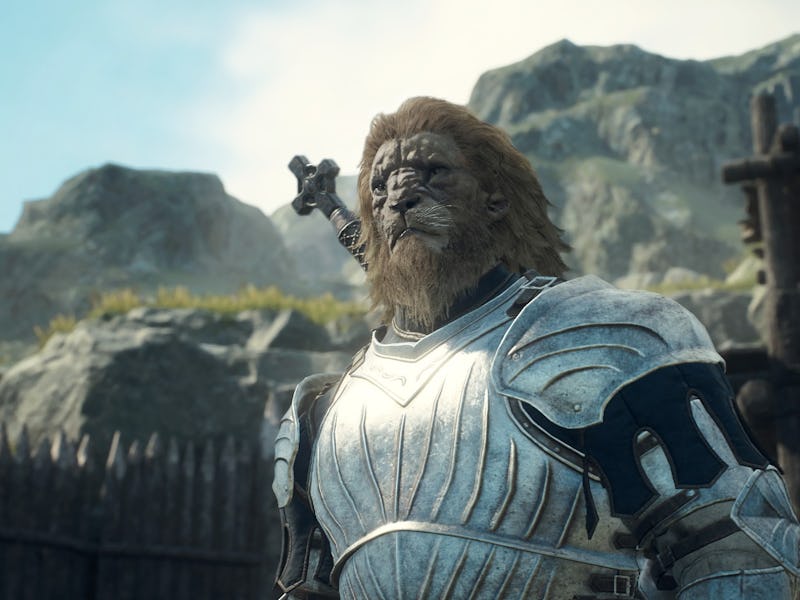Dragon's Dogma II Could Finally Deliver on the Original Game’s Vision
We’re going to the Moon!

Dragon’s Dogma was far ahead of its time when it was released in 2012. This wildly ambitious RPG bucked trends with innovative companion AI, climbing combat, and a twisty multiversal story. It’s a baffling, messy, and visionary game. That’s exactly what makes it so memorable 11 years on. With a first look at gameplay for Dragon’s Dogma II, however, it seems like the sequel could finally deliver on the lofty vision of its predecessor.
Anyone that’s played the first game will notice immediately that Dragon’s Dogma II looks remarkably similar, but in this case, that’s completely not a bad thing. That’s the best case anyone could ask for with this sequel, simply because the first Dragon’s Dogma suffered heavily from hard development and budget cuts.
In 2013, photos of an internal presentation at Capcom surfaced, showing the original outline and plan for Dragon’s Dogma. There was a wealth of cut content, with nearly half of the content included absent from the game. This included a variety of cut areas and even playable races, like a humanoid Lion race that we now see included in Dragon’s Dogma II.
One of the wildest pieces of cut content was an endgame dungeon where, apparently, players would travel to the Moon and quite literally slay a god. That’s fantastic within the context of the first game’s story. After all, this is a game that starts out with a dragon stealing your heart, and it can end with you stabbing yourself with a holy blade to transform into a god.
Seeing pieces of cut content in the trailer for Dragon’s Dogma II seemingly suggests that the development team is hoping to bring back what it couldn’t do before. The sequel also clearly has a bigger budget, which can be afforded by Capcom having some of the best financial successes in its history recently.
On top of that, Dragon’s Dogma II can refine a lot of the systems that felt experimental in the first game, combining them all into a more cohesive whole. A big part of this is the Pawn system, AI companions that accompany you on your journey. These companions can gain all of the classes and skills that players can, and in the original, you could even recruit Pawns that other players had created.
Dragon’s Dogma II still seems to put a heavy emphasis on both the Pawn system and climbing on monsters.
While the system felt revolutionary at the time, and the companions really held their own in battle, AI systems have grown by leaps and bounds since then. A good example of this is your Palico and Palamute companions in recent Monster Hunter titles, which have become integral pieces of combat.
In many ways, the Dragon’s Dogma open world also felt like a precursor to both Breath of the Wild and Elden Ring. At the time most open-world games tended to follow an Elder Scrolls or Ubisoft-style checklist open world where you’d have countless quests and points of interest. Dragon’s Dogma, on the other hand, really encourages freedom and exploration. It does not hold your hand with objectives and instead lets you discover interesting things on your own. Discoveries in Dragon’s Dogma always feel meaningful, be it epic boss battles, key pieces of equipment, or tantalizing lore.
Again, the key problem with Dragon’s Dogma was that all of these ambitious pieces felt like they simply didn’t have enough time in the oven. That’s the key factor with Dragon’s Dogma II — and 10 years of innovation to draw from. If Capcom is willing to take the time and care it needs, Dragon’s Dogma II could end up being one of the best RPGs ever made.
This article was originally published on